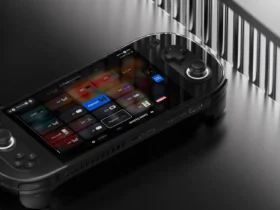Introduction
In the world of portable gaming PCs, the Ayaneo 2 and the Steam Deck have been making waves with their impressive features and capabilities. These handheld devices have garnered significant attention from gaming enthusiasts who seek a powerful and immersive gaming experience on the go. In this article, we will delve into a detailed comparison of the Ayaneo 2 and the Steam Deck, exploring their specifications, performance, battery life, software, and overall user experience. Let’s dive in!
Unveiling the Ayaneo 2
When it comes to specifications, the Ayaneo 2 and the Steam Deck both boast impressive hardware. The Ayaneo 2 stands out with its compact design, housing a powerful AMD Ryzen 6800U processor with Radeon 680M graphics. On the other hand, the Steam Deck features a custom chip designed by Valve, offering a seamless gaming experience.
Key Features:
- Display: 7-inch IPS touchscreen
- Resolution: 1920×1200
- CPU: AMD Ryzen 7 6800U (8-core/16-thread)
- CPU Speed: 2.7GHz base clock, 4.7GHz boost clock
- GPU: Integrated AMD Radeon RDNA 2
- Memory: LPDDR5-6400
- Storage: 1TB NVMe
- Battery: 50.25 Whr
- Connectivity: WiFi 6, Bluetooth 5.2
- I/O: x2 USB Type-C (top), x1 USB Type-C(bottom), audio combo jack, MicroSD expansion
- Security: Fingerprint Scanner
- Dimensions (LxWxD): 10.4 x 4.2 x 0.9 inches
Performance and Graphics

In terms of raw graphical performance, the Ayaneo 2 takes the lead with its AMD processor, delivering nearly double the teraflops compared to the Steam Deck’s custom chip. This advantage allows games to be played at higher graphical settings, offering a more visually stunning experience. However, it’s important to note that the Ayaneo 2’s performance comes at a cost. The device requires higher wattage, resulting in shorter battery life and potential overheating issues.
Ayaneo 2 Price
The company has decided to price the device at $1099 as the entry price which will rise to $1499 if kitted with 32GB RAM and 2TB SSD.
Battery Life and Portability
One of the key considerations for portable gaming PCs is battery life. Here, the Steam Deck shines with its impressive battery performance, providing users with extended gaming sessions on a single charge. In contrast, the Ayaneo 2 struggles to keep up, with its battery draining quickly, especially when playing graphics-intensive games at higher wattage settings. This limitation can be a significant drawback for gamers who prefer longer gaming sessions on the go.
Software and User Experience
When it comes to software, the Ayaneo 2 ships with Windows, offering compatibility with a wide range of games. This advantage allows gamers to access a vast library of titles without the need for additional software or configurations. Conversely, the Steam Deck operates on a Linux-based SteamOS, which may require some additional setup for certain games. However, Valve has been actively working on enhancing Steam Deck’s user experience, ensuring a seamless gaming environment for users.
Ergonomics and Build Quality
The Ayaneo 2’s controls receive praise for their tactile feel, with smooth joysticks, buttons, triggers, and bumpers. However, some drawbacks, such as the malfunctioning gyro on the X-axis and a less-than-ideal D-pad design, compromise the overall gaming experience. Additionally, the device’s grips, although comfortable, lack thermal insulation and can become warm during extended gameplay sessions. On the other hand, the Steam Deck’s ergonomics and build quality provide a more satisfying and reliable handheld gaming experience.
Verdict

Considering the factors discussed, choosing between the Ayaneo 2 and the Steam Deck ultimately depends on individual preferences and priorities. While the Ayaneo 2 offers superior graphical performance and a compact design, it falls short in terms of battery life and software optimization. On the other hand, the Steam Deck excels in providing longer gaming sessions, seamless software integration, and an ever-expanding library of compatible games.
In conclusion, both the Ayaneo 2 and the Steam Deck have their strengths and weaknesses. As the portable gaming PC market continues to evolve, it’s worth keeping an eye on future iterations and advancements from both manufacturers. Ultimately, the decision comes down to personal preferences and the specific requirements of each individual gamer.
Also look at: Ayaneo 2s
Wrap Up:
In this article, we explored the key differences between the Ayaneo 2 and the Steam Deck, two highly anticipated portable gaming PCs. From their specifications and performance to battery life and software, each device offers unique advantages and drawbacks. Whether you prioritize raw graphical power or extended gaming sessions on the go, the Ayaneo 2 and the Steam Deck cater to different needs. As the portable gaming landscape evolves, gamers can look forward to even more exciting advancements and options in the future.
This post contains affiliate links. I may receive a small commission if you click through and make a purchase.








Leave a Reply